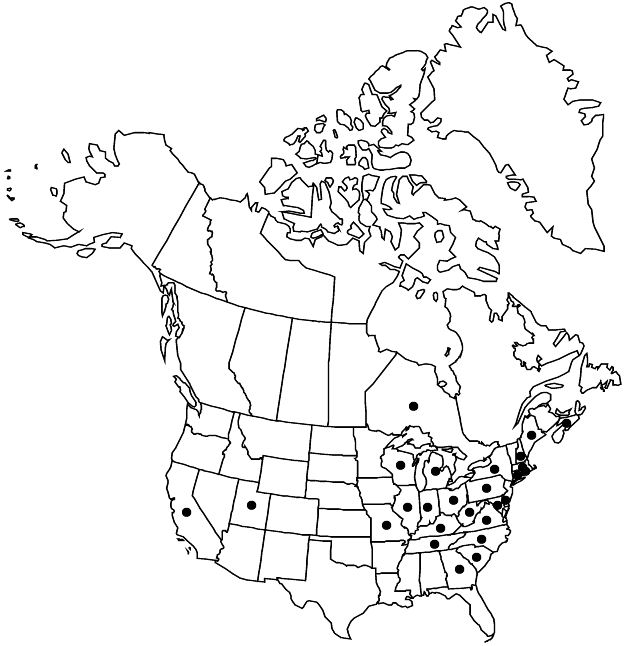Spiraea japonica
Suppl. Pl., 262. 1782.
Shrubs, 10–15 dm, not rhizomatous. Stems erect, branched. Leaves: petiole 2–7 mm; blade ovate to lanceolate, 5–10 × 2–4 cm, membranous, base cuneate, margins sharply doubly serrate, number of primary and secondary serrations 3–5 times number of secondary-veins (excluding inter-secondary veins), venation pinnate simple-craspedodromous, secondary-veins not prominent, apex acute, abaxial surface pubescent, adaxial glabrous. Inflorescences mostly terminal, corymbiform, 5–8 × 5–15 cm; branches finely villous. Pedicels 4–6 mm, finely villous. Flowers 4–8 mm diam.; hypanthia campanulate, 1–1.2 mm, abaxial surface strigose, adaxial pubescent; sepals triangular, 1–1.3 mm; petals light to dark-pink, obovate, 1–1.5 mm; staminodes 0; stamens 25–30, 2 times petal length. Follicles oblanceoloid, 2–3 mm, glabrous, adaxial suture glabrous or ciliate. 2n = 36.
Phenology: Flowering May–Jun; fruiting Jun–Sep.
Habitat: Wet meadows, riparian zones
Elevation: 0–1500 m
Distribution

Introduced; N.S., Ont., Calif., Conn., Del., Ga., Ill., Ind., Ky., Maine, Md., Mass., Mich., Mo., N.H., N.Y., N.C., Ohio, Pa., R.I., S.C., Tenn., Utah, Va., W.Va., Wis., Asia (China), Asia (Japan), Asia (Korea), also in w, c, Europe
Discussion
Spiraea japonica is currently recognized as having eight varieties (Zhang Zhao Y. et al. 2002, 2006; Lu L. T. and C. Alexander 2003) and has been the source of many hybrids and cultivars that have been popular for gardens in temperate zones around the world.
Various varieties or cultivars of Spiraea japonica have become noxious weeds, primarily in wet sites and riparian areas. In Tennessee, S. japonica is ranked as a significant threat to native species by the Tennessee Exotic Pest Plant Council (2009); it is noted as a threat to S. virginiana through competition in the riparian zone (D. W. Ogle 1992).
One cultivar that is noted as having established populations is Spiraea ×bumalda Burvenich, which has been considered to be a hybrid of S. albiflora Miquel and S. japonica (B. A. E. Koehne 1893; L. H. Bailey et al. 1949; A. J. Rehder 1927; A. Huxley et al. 1992).
Selected References
None.